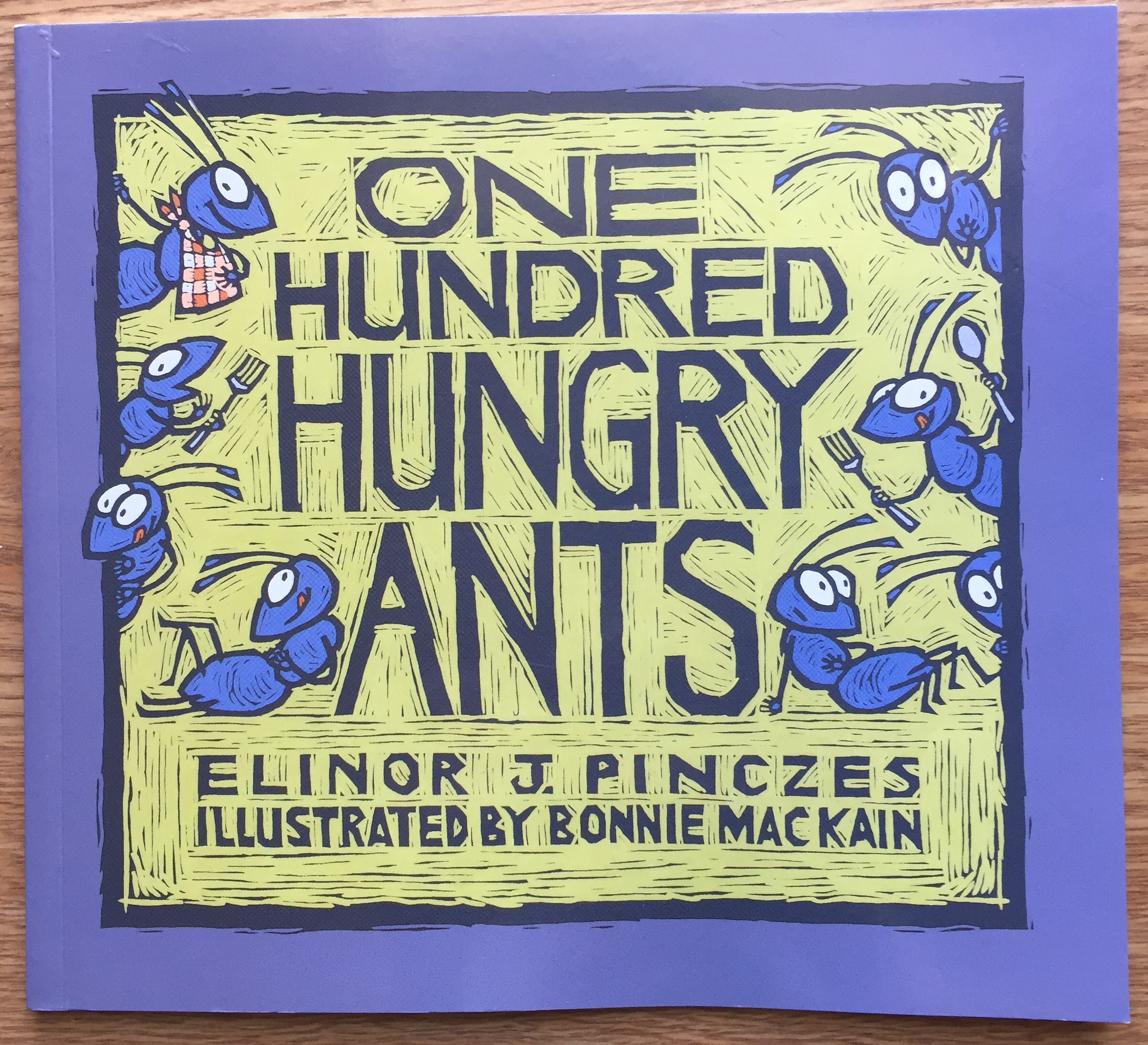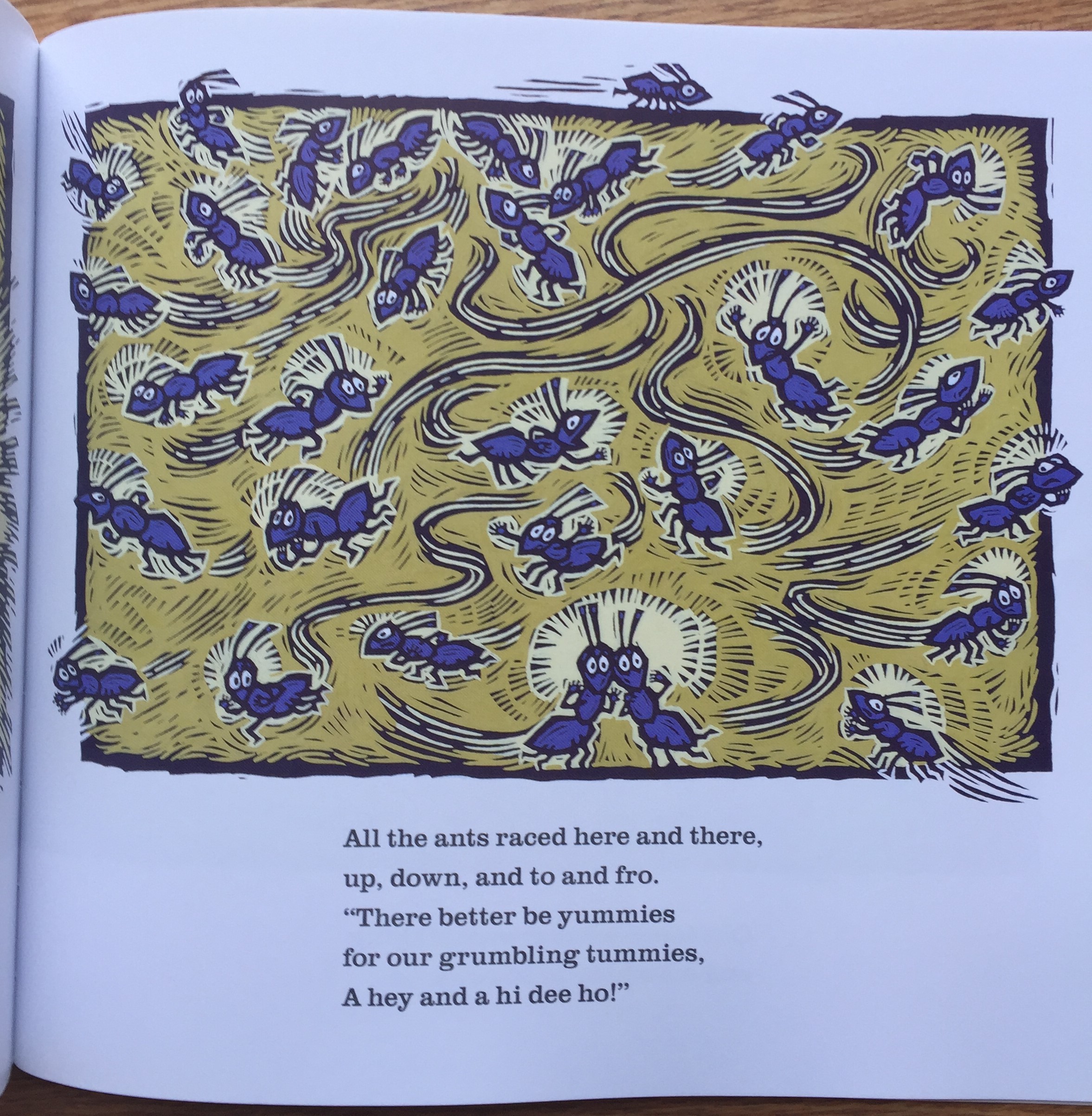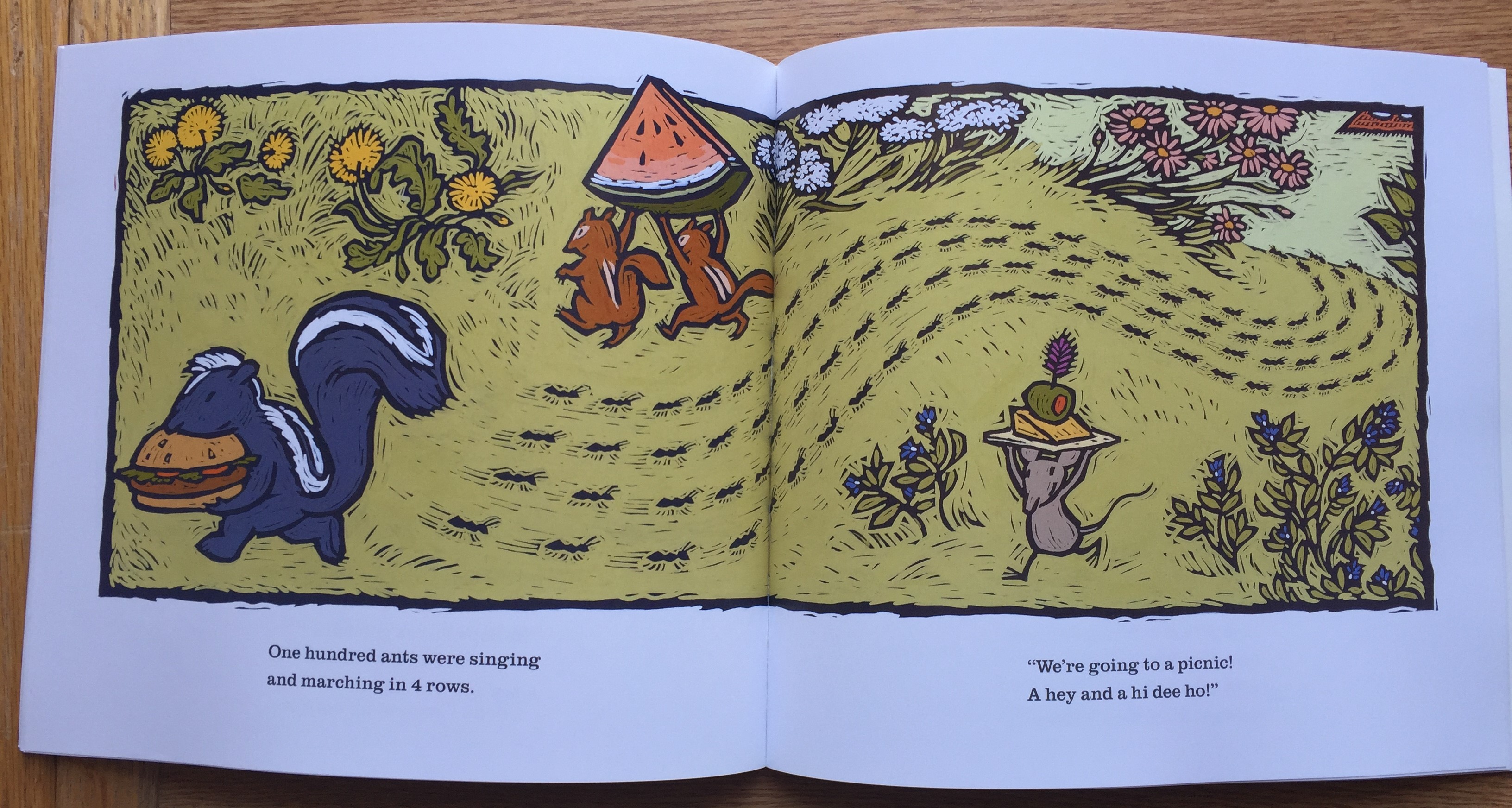
Author: Elinor J Pinczes
Illustrator: Bonnie Mackain
Publisher and Year: Houghton Mifflin Company 1993
Number of pages: 28
Genre: Fiction
Analysis:
One Hundred Hungry Ants is a sort of retelling of the song “the ants go marching” children’s nursery rhyme. In the book, 100 ants are marching to a picnic and do not want to be late otherwise they will miss the food. The smallest ant brings up the idea that they should form shorter lines so they can all get there faster. Unfortunately, every time they rearrange it is a mess and the ants waste time. By the time they reach the picnic, all the food is gone and the 99 ants are upset with the smallest ant for making them late.

Overall, this book does not have much cultural context to it. It could be argued that the idea of a picnic is one of a certain set of values and may have specific cultural context, but because it is not from a human’s perspective but rather an insect’s perspective, it doesn’t fit into a window, mirror, or door category. While it could be a good tool to use when discussing multiplication, it is mainly an ideologically superficial book with not much deeper meaning. Because One Hundred Hungry Ants only has a superficial ideology, this makes it a helpful book to have in one’s classroom.

Not all the books used in a classroom need to have a deeper meaning, and the fact that this has little meaning besides being a fun story allows your students to learn from just the events that take place, rather than paying attention to cultural values that take place in the book. Because of the repetitive nature of the text it would be simple to use it in the context of multiplication. Every time the ants change positions is an example of different multiplications. Because the ants change position into different lines, these lines can be used to show multiplication and factors such as: 1 times 100 is 100, 2 times 50 is 100, 4 times 25 is 100 and 5 times 20 is 100. Overall, this book does not have much cultural significance of cultural depth but could be used as a helpful math resource in a classroom.
